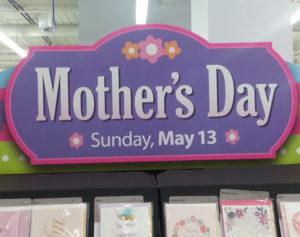
Following my 2017 Mother’s Day blog post, I had to think long and hard about what to write for 2018. Not coming up with a topic for some time, I figured that I’d simply promote my 2017 post once again. That post touched a lot of people, and it talked about some advice my mother gave me about getting married – advice which helped save me and our family from bedlam and chaos. Recently while at the gym, a topic came to me for 2018 – a remembrance of both of my maternal and paternal grandmothers, and their lasting impressions on my life as a child, and now as an adult.
* * *
As described in the story of my blog, I grew up in Buffalo, NY. Following my parent’s divorce, we returned to New York State’s western-most city where my mother grew up. With most of my aunts and uncles having fled Buffalo along with many other blacks in their peer group, my grandmother moved in with us – on top of us as most houses in the Buffalo were what I call ‘true’ duplexes. True duplexes are singular structures containing multiple units, all under one mortgage. Each unit has its own living room, bathroom, kitchen and multiple bedrooms – something you don’t see here in the Washington, DC market – something I plan to revisit in greater detail in another post where I’ll discuss some of my adventures in learning how to invest in real estate.
My maternal grandmother was a very beautiful woman as a younger woman and as a senior, and there were always suitors. I didn’t fully appreciate it then, but an advantage I’ll always have over my younger cousins is that I was able to spend quality time with my maternal grandmother during my childhood. Some of my first cousins just under me age-wise either didn’t get to spend time with her due to life circumstances, or didn’t appreciate their time with her while she was still in good health.
It is really important that we all spend as much time with our elderly relatives as we can. Even if that means just popping over a few times a week to visit a grandmother in a care home. We just never know how much time we are going to get with someone.
We do not want to look back at the past and notice the missed opportunities or the questions that have been left unanswered. Always ask your loved ones all the questions you want to ask, even if it is just a question about your family tree or what their favorite color is. One day you might wish you had if you do not do it at the time.

Curiosity was always in my nature. As stated in the story of my blog, I always enjoyed hearing my elders talk and tell their stories. As result, I regularly asked my maternal grandmother questions about varying topics and sought her wisdom. Sharing everything would literally take volumes to write, so I’ll just share a few.
“My children are all different Anwar,” Grandma told me more times than I can count. It was a simple, but profound statement. Over the years she observed that while her eight children were born to the same mother, ate the same food, and for the most part learned the same set of values, each of them figuratively ‘scattered’ into eight different directions – some closely adhering to what they’d been taught while others went their own way, setting in motion the inevitable family dramas, fallouts, squabbles and rivalries. She also strongly believed that in terms of family, “The stronger ones should take care of the weaker ones.”
I didn’t know it at the time, but grandma taught me my first lesson about the concept of “Nature vs. Nurture”. This was many years before I had heard of Dr. Thomas Sowell, Dr. Walter E. Williams, or Malcolm Gladwell. It was decades before I met the mentor whom I regularly discuss this concept with – the same mentor who encouraged me to list out the principles of my blog. With such vast differences in one family, isn’t it logical to expect such variability in a whole society of millions of people?
Are our lives extensions of what we were taught in our familial ecosystems? Are our lives the very essence of who we are as individuals? Or are our lives mixtures of both? What I’ve seen in my own family suggests that our lives are mixtures of both. What have you seen in your familial ecosystems?
“People should only speak in ‘tongues’ if there is someone there to interpret what’s being said,” Grandma told me in my late teens. I was raised in a black ‘Baptist’ church in the north. I thus had no idea what I was in for when transferring to Johnson C. Smith University in the region affectionately called the ‘Bible Belt’ – a region where Christianity is much more fanatical, militant, supernatural, and in some instances, cultish.

I had never seen so many people catching the ‘Holy Ghost’, running around their church services, kicking things over, and ‘speaking in tongues’. It all collectively scared me initially and shook whatever faith I had at the time. My maternal grandmother was the first to tell me that this speaking in tongues thing, which was essentially a verbal revelation from the ‘Holy Spirit’, is something not to be done lightly and for show – something that my peers from the southeast seemed to be engaging in.
My maternal grandmother shared things with me about our family, and about the past that I didn’t hear anywhere else. If I recall correctly, she encouraged my mother to let my brother and I form our own opinions about our father, and to also allow us to have a relationship with him. She further encouraged my mother not to demonize him. Apparently, there are a lot of mothers who vengefully keep their children away from their fathers – demonizing them once their romantic relationship breaks down – often to the detriment of the children.
As described in my second essay for A Voice for Men titled “Two very well-behaved boys left to figure things out on their own”, I heard my maternal grandmother discuss the differences between being “Providers” and “Fathers” – something which gave me deep insight into what’s expected of a man should he sire children. Apparently, a man can be one without being the other – the ideal situation is that he’s both. As I got older I found that many of my peers in Black America had neither.
“You raise your children for society.” My maternal grandmother never said this to me a directly. It was one of my grandmother’s philosophies/values my mother shared with me. It meant that your children weren’t just things that you carelessly brought into the world. If you had them, it was your responsibility to make sure that they made the world a better place, that they would contribute something positive, and didn’t end up in someone’s prison.
“Be with someone who loves you more.” This again is something not said directly to me. My mother shared this piece of advice that my maternal grandmother shared with her – something I don’t think my uncles were taught. At the time I was in my early 30s, and entangled in a very, very toxic romantic relationship that I couldn’t break free from. I loved this particular woman more than she loved me which created a very bad imbalance. Now considering myself a bit of a ‘Men’s Rights Activist/Advocate’, I feel compelled to share this part of the ‘game’ with other men. Thus, for any man reading this, keep this little nugget in your mind because I’m seeing that many girls are taught this part of the game, but not the boys which is in many ways unfair.

“Be a good son, Anwar.” My grandmother told me this towards the end of her life. At that point she had developed some health ailments, and had become dependent upon the care of her own children. I think that she was encouraging me at that time to be an attentive and caring son if and when my own parents needed me later in life. Now in my early 40s it’s clear to me that not every child cares for their parents in their last stages, even though it’s something they may have been taught to do.
Again I feel as though I was one of the lucky grandchildren to have her there for the majority of my childhood. Both my brother and I are the only two of her grandchildren who can actually say that. She was there until I went away to college, before moving to Georgia for the remainder of her life. That’s the last place that I saw her. That was March of 2008.
* * *
In terms of my paternal grandmother, I’ll start by saying that there are often other causalities in divorces besides the married couple and their children. Sometimes it’s other relatives who don’t get to see the children of those divorces as often. It’s something that affects all parties involved for years to come. There are many instances where children of broken relationships have little contact with the other sides of their family – this is just one. I think ours was just circumstance.
It can be really sad to think about the lack of time spent with some relatives, but it is important to remember that sometimes circumstances dictate a person’s life, and children have no control over that.
I didn’t know my father’s mother that well before she passed away in August of 1999. We lived in Buffalo and she lived seven hours away in New York City. We were younger at the time and didn’t travel independently – especially not to places like New York City – a dangerous and overwhelming place if you asked my mother. I thus only saw my paternal grandmother on the one or two visits to see my father – not a significant amount of time.
That said as a child, I fondly recall going down to upper Manhattan where she lived and staying in her two-bedroom apartment in one of those orange-brick ‘Public Housing’ buildings you see in many of New York City’s five boroughs – one in a set of three or four, with a shared playground, park benches and basketball courts on the ground level. The elevators had that smell of urine and were ‘tagged’ with markers and spray paint. It was the coolest things for me to see at that time as it was so different than what I knew back in Buffalo. Her apartment overlooked the elevated train tracks leading to and from Grand Central Station – a perfect bird’s eye view. A lover of trains back then, I would spend lots of time in her windows watching the “Metro-North” commuter trains going back and forth, and hoping to spot the “Amtrak” trains which ran less frequently.

She cooked for us when we came, and boy could she cook. We ate like kings. She spoiled us with big breakfasts, and large dinners – usually involving something fried like chicken or salmon croquets. There was also my grandfather’s ‘Shrimp Gumbo’ recipe which my father says he has laying around in a box somewhere. The hallmark of the breakfasts were the waffles, beef bacon and cheese eggs. Then there were the banana cakes on our birthdays. There was one particular visit where I ate so much that my mother said that she could visibly see how much weight I had gained when we got off the train back in Buffalo towards the end of one summer.
“Puff Daddy was performing at a gym with Heavy D and there was a shooting,” my paternal grandmother said on one of visits as young teens. We were up at my father’s house and she had seen a news broadcast from New York City. We were preparing to eat one of her wonderful meals. It was the early 1990s and we knew who Heavy D was because he had been out for a while and had numerous hits and music videos. I had never heard of this Puff Daddy before, and wondered what she was talking about. His music just hadn’t made it up to Western New York yet, so we didn’t know anything about him. Three to four years later, Puff Daddy created one of the hottest rap labels of all time; Bad Boy Records. It’s funny when I think about it.
Those were rare occurrences though – specks in the entirety of my life. Similar to my father, because our time was limited, all of the times were fun times at that stage – meant to make up for the lost time and packing in as many good experiences possible. I’m thankful for them, but I can look back as an adult and realize what they were. I also realize the ‘why’ now – something you don’t know as a child on a deeper level.
I didn’t get to know my paternal grandmother on a deeper level the way that I got to know my maternal grandmother – there were no substantial passages of knowledge and wisdom. Well actually, there is one which I’ll keep to myself. I can tell you a lot about her though. She was very gregarious, and always laughing – she was very bubbly and always smiling for one reason or the other. She really enjoyed playing the lottery which is probably where my father got it from. They would play the ‘lot-to’ and attentively watch the numbers on the news every night hoping to win something. Based upon stories from my father, she was also a very superstitious woman – she didn’t believe in picking up pennies on the street, or splitting poles and people when walking down the street. Those are just the two that I know about.
One of my biggest regrets is not doing enough for her, like getting her gifts around the holidays. On my mother’s side of the family birthdays and holidays were sacred and not getting gifts was literally playing with your life. There were times when my mother had to remind me of those expectations until I got to the point of knowing what to do on my own. Gifts weren’t as important to Dad, and thus the importance of getting them for his mother wasn’t engrained in me. There was one instance as an early teen when I realized that I should have gotten her something for Christmas. It wasn’t something she said or reprimanded me over, but instead I realized in her nonverbal body language – her disappointment – something I’ll never forget.
* * *
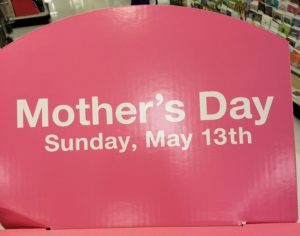
I’ll end this with a few closing points. My maternal grandmother was a great cook as well. She made a lot of things. Her macaroni and cheese recipe was popular when I’ve made it for some coworkers. She lives on through it among other things. For many years, I needed reminders from my own mother about Grandma’s November 8th birthday. I remembered after a while. My father was an only child and thus my brother and myself were his mother’s only grandchildren. I didn’t understand it growing up, but having ‘Grands’ is actually a really big deal. I guess that explains why she spoiled us so much when she saw us. Oh, and I’ve finally gotten my hands on her Shrimp Gumbo recipe and will be experimenting with it soon.
I’m going to wrap this up by saying that as I grew into adulthood, I watched both of my grandmothers’ declines, and I still remember the last time I saw both. They passed away almost ten years apart. To whoever reads this, man or woman, I encourage you to take care of your health as much as possible as you get older, as we all inevitably will. To the younger folks, cherish your elders as much as you can while they’re still here. Get as much wisdom as you can while they’re still around, as you never know if and how it will help you as you progress through your own years, and the challenges in them. Lastly, do as much for them as you can while you still have them.
Thank you for taking the time out to read this blog post. If you enjoyed this post, you might also enjoy:
• Mother’s Day 2017: One of my mother’s greatest gifts, getting engaged, and avoiding my own personal fiscal cliff
• Father’s Day 2017: Reflections on some of Dad’s money and life lessons
• Two well-behaved boys left to figure things out on their own: Reflections on growing up ‘Blue Pill’
• Challenging stereotypes and misconceptions in academic achievement
• The benefits and challenges of using articulate speech
If you’ve found value here and think it would benefit others, please share it and or leave a comment. To receive all of the most up to date content from the Big Words Blog Site, subscribe using the subscription box in the right hand column in this post and throughout the site. Please visit my YouTube channel entitled, Big Discussions76. Lastly follow me on Twitter at @BWArePowerful, on Instagram at @anwaryusef76, and at the Big Words Blog Site Facebook page. While my main areas of focus are Education, STEM and Financial Literacy, there are other blogs/sites I endorse which can be found on that particular page of my site.

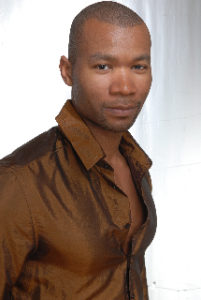 Before becoming a scientist and a writer, I was a scientist and a dancer. I fell in love with Salsa music and dance during graduate school, and became hooked. The dancer I emulated the most was Shaka Gonzalez Brown, founder the
Before becoming a scientist and a writer, I was a scientist and a dancer. I fell in love with Salsa music and dance during graduate school, and became hooked. The dancer I emulated the most was Shaka Gonzalez Brown, founder the 
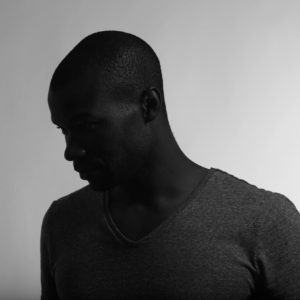 SGB: I got interested in Salsa in my senior year of college at
SGB: I got interested in Salsa in my senior year of college at  SGB: My coworkers? They just thought it was a hobby. When you’re spending more time doing your hobby than your actual job, you have to make some adjustments. My thought process was that if I’m spending 10-12 hours on a job from the time I wake up to the time I get home, and what I really enjoy doing, I’m only doing for four to five hours each day, how can I enjoy doing what I love doing for eight hours a day, make that my fulltime job and put that same energy and commitment into it? Then I would be a lot happier, and then numbers-wise I said, ‘You know I can make something like this work.’
SGB: My coworkers? They just thought it was a hobby. When you’re spending more time doing your hobby than your actual job, you have to make some adjustments. My thought process was that if I’m spending 10-12 hours on a job from the time I wake up to the time I get home, and what I really enjoy doing, I’m only doing for four to five hours each day, how can I enjoy doing what I love doing for eight hours a day, make that my fulltime job and put that same energy and commitment into it? Then I would be a lot happier, and then numbers-wise I said, ‘You know I can make something like this work.’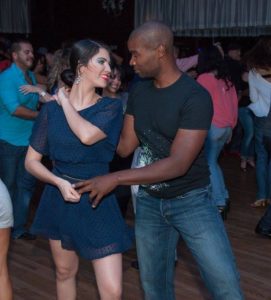 SGB: I really appreciate hearing that. One day I’m going to go to Albany. Folks are going to say, ‘You’re not Shaka Brown,’ and I’m going to say, ‘Yes I am (laughing).’
SGB: I really appreciate hearing that. One day I’m going to go to Albany. Folks are going to say, ‘You’re not Shaka Brown,’ and I’m going to say, ‘Yes I am (laughing).’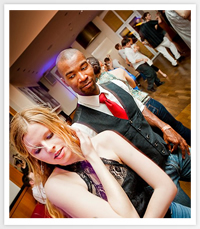 We would go out dancing just about every night:
We would go out dancing just about every night:  SGB: Miami is a different kind of scene. It’s definitely more Latin. In terms of Salsa, there are way more stations. You can turn on the radio here and hear Latin music all of the time. That’s not an issue. In DC, you’ll have Nancy Alonzo – you’ll have stations where for the next two hours, she for example will have a Salsa program, and that’s all they’re going to do.
SGB: Miami is a different kind of scene. It’s definitely more Latin. In terms of Salsa, there are way more stations. You can turn on the radio here and hear Latin music all of the time. That’s not an issue. In DC, you’ll have Nancy Alonzo – you’ll have stations where for the next two hours, she for example will have a Salsa program, and that’s all they’re going to do.
 I’m not really a fighter so the closest thing I get to that is partner dancing. It’s the same thing of – I’m going to try to do this thinking that my partner is going to do that, and if they don’t do that I need to be able to do something different and adjust to it in such a way to make it enjoyable, and non-painful. It’s the adjustment to that that I love. So what I did was I took classes anywhere that I could, because I liked seeing how different people taught.
I’m not really a fighter so the closest thing I get to that is partner dancing. It’s the same thing of – I’m going to try to do this thinking that my partner is going to do that, and if they don’t do that I need to be able to do something different and adjust to it in such a way to make it enjoyable, and non-painful. It’s the adjustment to that that I love. So what I did was I took classes anywhere that I could, because I liked seeing how different people taught.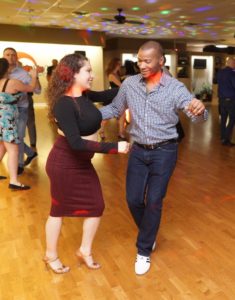 SGB: Yes you do. There’s no scale; this is a good dancer, this is a great dancers, this is a fantastic dancer and you only want to dance with people at this level or at that level. It’s kind of like an ocean where you say, ‘I only want to go in the ocean where the water is this deep.’ There are so many things to appreciate at so many different levels. Every single person you dance with, you’re understanding them, and you’re talking with them and communicating with them. If their timing is horrible, that’s what you guys can work on; giving her something you guys can share and appreciate.
SGB: Yes you do. There’s no scale; this is a good dancer, this is a great dancers, this is a fantastic dancer and you only want to dance with people at this level or at that level. It’s kind of like an ocean where you say, ‘I only want to go in the ocean where the water is this deep.’ There are so many things to appreciate at so many different levels. Every single person you dance with, you’re understanding them, and you’re talking with them and communicating with them. If their timing is horrible, that’s what you guys can work on; giving her something you guys can share and appreciate.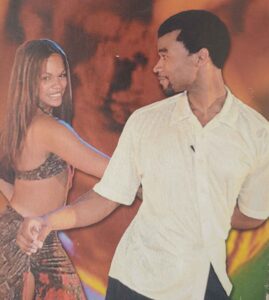
 Thank you for taking out the time to read this interview. It will be continued in
Thank you for taking out the time to read this interview. It will be continued in 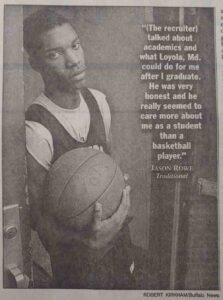
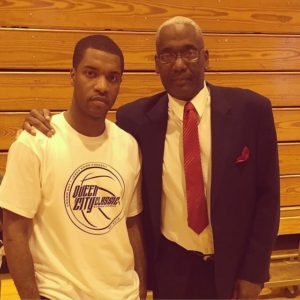 Jason Rowe: I was a ‘Merit’ and ‘Honor Roll’ student. If I wasn’t, I wouldn’t have been able to play. My parents instilled education in me from day one. My mother and father were constantly on me about grades. If my grades weren’t above a certain GPA, then I wasn’t allowed to play basketball. My father actually took me off the ‘Modified’ team at Traditional for half the season because my average was an 87% and not a 90% or better. So in no way shape or form would I say that Buffalo Traditional didn’t prepare me. No!!! My parents prepared me and instilled how important my education was.
Jason Rowe: I was a ‘Merit’ and ‘Honor Roll’ student. If I wasn’t, I wouldn’t have been able to play. My parents instilled education in me from day one. My mother and father were constantly on me about grades. If my grades weren’t above a certain GPA, then I wasn’t allowed to play basketball. My father actually took me off the ‘Modified’ team at Traditional for half the season because my average was an 87% and not a 90% or better. So in no way shape or form would I say that Buffalo Traditional didn’t prepare me. No!!! My parents prepared me and instilled how important my education was.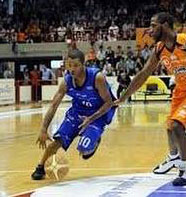 JR: It felt like home. I got injured at the ‘
JR: It felt like home. I got injured at the ‘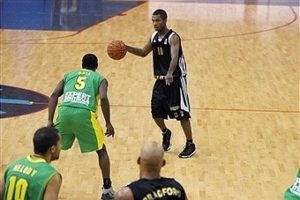 JR: I had family in Maryland so being away from home wasn’t an issue for me. The biggest issue for me was learning the point guard position because in high school we didn’t have any plays. In college now it was about game management – knowing what’s a ‘good’ shot, knowing what’s a ‘bad’ shot, and how to keep your teammates happy. There were so many things that I was lacking that I had to pick up very fast.
JR: I had family in Maryland so being away from home wasn’t an issue for me. The biggest issue for me was learning the point guard position because in high school we didn’t have any plays. In college now it was about game management – knowing what’s a ‘good’ shot, knowing what’s a ‘bad’ shot, and how to keep your teammates happy. There were so many things that I was lacking that I had to pick up very fast.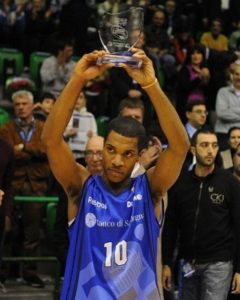
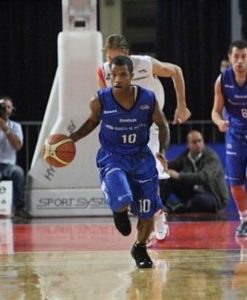 JR: Yes, for a very long time. For anyone who plays basketball long enough, that’ s going to be a dream – especially someone who studied it, watched it, and idolized players in the NBA.
JR: Yes, for a very long time. For anyone who plays basketball long enough, that’ s going to be a dream – especially someone who studied it, watched it, and idolized players in the NBA.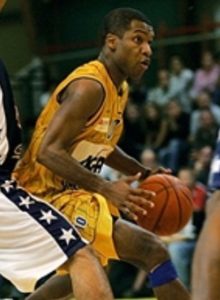 JR: It was through an agency. My college coach gave me a ton of agent letters – dozens and dozens of them and I literally went through all of them, researched them, and figured out which one worked best for me. I literally had an interview process with a couple of agencies and picked an agent that would best help me to further my career overseas and further my basketball career in general.
JR: It was through an agency. My college coach gave me a ton of agent letters – dozens and dozens of them and I literally went through all of them, researched them, and figured out which one worked best for me. I literally had an interview process with a couple of agencies and picked an agent that would best help me to further my career overseas and further my basketball career in general.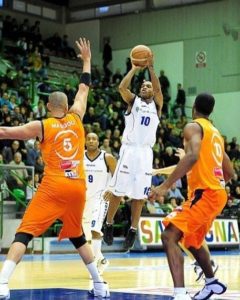 JR: I’m trying to remember – my senior year, I was around 25th in the country in scoring, 15th in assists, and 3rd in steals. In my junior year I was 2nd or 3rd in steals, and in my sophomore and senior years it was similar.
JR: I’m trying to remember – my senior year, I was around 25th in the country in scoring, 15th in assists, and 3rd in steals. In my junior year I was 2nd or 3rd in steals, and in my sophomore and senior years it was similar.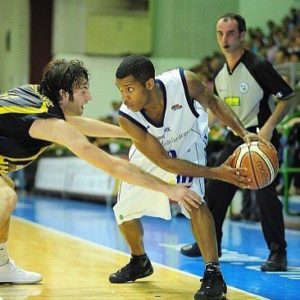 JR: There’s two sides to it. There’s the ‘wow-factor’, and there’s the competitive part. The wow-factor lasts about five seconds. I walked on the court and I remember looking at him. He’s not bigger than me – maybe an inch taller. His arms are super long and I remember looking at him and thinking, ‘Wow, this was once the best player in the
JR: There’s two sides to it. There’s the ‘wow-factor’, and there’s the competitive part. The wow-factor lasts about five seconds. I walked on the court and I remember looking at him. He’s not bigger than me – maybe an inch taller. His arms are super long and I remember looking at him and thinking, ‘Wow, this was once the best player in the 
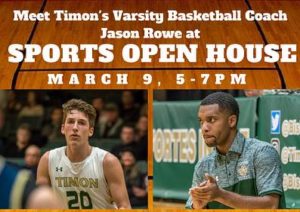 JR: I love it. To be honest, coaching wasn’t something I was looking forward to – I just wasn’t into it. I don’t like stress – the yelling and the screaming. I’m actually a calm coach, and my kids think it’s hilarious. I don’t yell and I don’t scream and yet I know how to get my point across without demeaning or belittling the kids. That works for me, and I relate to my kids the best way that I can and it’s working for our team. We’re having huge success this year. I’ve tried to take my experience from playing for four different coaches and meshing everything together to come up with my own coaching style.
JR: I love it. To be honest, coaching wasn’t something I was looking forward to – I just wasn’t into it. I don’t like stress – the yelling and the screaming. I’m actually a calm coach, and my kids think it’s hilarious. I don’t yell and I don’t scream and yet I know how to get my point across without demeaning or belittling the kids. That works for me, and I relate to my kids the best way that I can and it’s working for our team. We’re having huge success this year. I’ve tried to take my experience from playing for four different coaches and meshing everything together to come up with my own coaching style.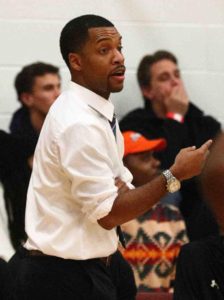 JR: I do training as well, and I’ve been fortunate enough to have a lot of hardworking kids. I think the era as a whole is more concerned about how people view them as opposed to actually getting into the gym and working. I think kids are worried about rankings and social media ‘likes’. Granted it’s a 20-year difference. We didn’t have a phone to let the world know we were in the gym working out, so their mentality is different because they have access to different things. My kids know that when it’s time for practice and training, they have to shut their phones off. When it’s training time give me an hour, and when it’s practice time, give me two hours. After that you can do you what you want to do, but lock into this and we’re fine.
JR: I do training as well, and I’ve been fortunate enough to have a lot of hardworking kids. I think the era as a whole is more concerned about how people view them as opposed to actually getting into the gym and working. I think kids are worried about rankings and social media ‘likes’. Granted it’s a 20-year difference. We didn’t have a phone to let the world know we were in the gym working out, so their mentality is different because they have access to different things. My kids know that when it’s time for practice and training, they have to shut their phones off. When it’s training time give me an hour, and when it’s practice time, give me two hours. After that you can do you what you want to do, but lock into this and we’re fine. JR: No. I was doing training and I had BPS kids. What works for me is that I respect them and they respect me. Fortunately, I played basketball a long time and I can help them get to where they want to be in terms of this game. Because of that I’m able to keep their attention for an exceptional amount of time. I’ve gone where they want to go, so if was in the
JR: No. I was doing training and I had BPS kids. What works for me is that I respect them and they respect me. Fortunately, I played basketball a long time and I can help them get to where they want to be in terms of this game. Because of that I’m able to keep their attention for an exceptional amount of time. I’ve gone where they want to go, so if was in the 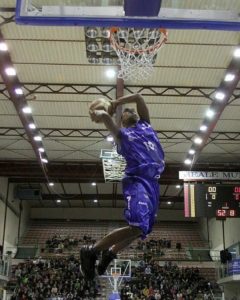 JR: Enjoy the moment. Enjoy the moment and take it seriously. Understand that every decision you make affects the next thing that you do. When I left school, it affected me possibly not being drafted which led to me going overseas. And I’m grateful to have gone overseas and to have played in fifteen countries, learned so many things, played against so many people. I was able to accomplish so many things and see the world with a basketball which is something I never thought would happen.
JR: Enjoy the moment. Enjoy the moment and take it seriously. Understand that every decision you make affects the next thing that you do. When I left school, it affected me possibly not being drafted which led to me going overseas. And I’m grateful to have gone overseas and to have played in fifteen countries, learned so many things, played against so many people. I was able to accomplish so many things and see the world with a basketball which is something I never thought would happen.
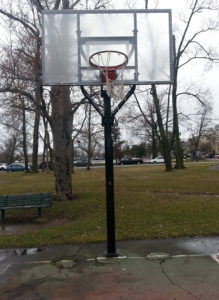 This article is the continuation of the series titled the
This article is the continuation of the series titled the  This post is the continuation of the series titled the
This post is the continuation of the series titled the 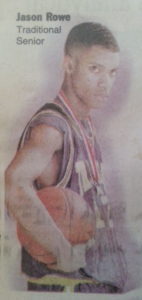 One of the key
One of the key 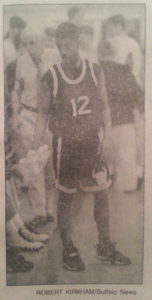 JR: It’s funny you should say that because that’s literally the story I was told. When I came home as a baby, there was a basketball hoop on the wall in my crib and my father used to pick me up and have me dunk the basketball as a kid.
JR: It’s funny you should say that because that’s literally the story I was told. When I came home as a baby, there was a basketball hoop on the wall in my crib and my father used to pick me up and have me dunk the basketball as a kid. JR:
JR:  AD: Being at Traditional for middle school, what made you decide to stay for high school? Is that just what the students did there?
AD: Being at Traditional for middle school, what made you decide to stay for high school? Is that just what the students did there?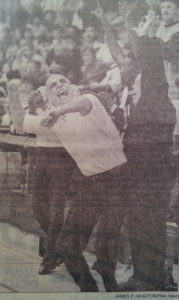 JR: Coach Cardinal was very honest when he would say, ‘I’m a gym teacher, and I don’t know much about basketball in terms of coaching.’ Because he was so open and honest, and didn’t try to hide that, it actually made us closer. He wasn’t lying and trying to be something he wasn’t. He was the most personable coach I ever played for because he had our backs and we knew that. In terms of
JR: Coach Cardinal was very honest when he would say, ‘I’m a gym teacher, and I don’t know much about basketball in terms of coaching.’ Because he was so open and honest, and didn’t try to hide that, it actually made us closer. He wasn’t lying and trying to be something he wasn’t. He was the most personable coach I ever played for because he had our backs and we knew that. In terms of 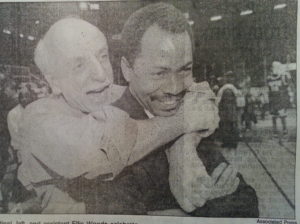 JR: Ellis Woods, who was the coach’s best friend. They were cut from the same cloth, and were very open and honest with us about what they did and didn’t know. We would run through a brick wall for both Coach Cardinal and Coach Woods. They could relate to us.
JR: Ellis Woods, who was the coach’s best friend. They were cut from the same cloth, and were very open and honest with us about what they did and didn’t know. We would run through a brick wall for both Coach Cardinal and Coach Woods. They could relate to us.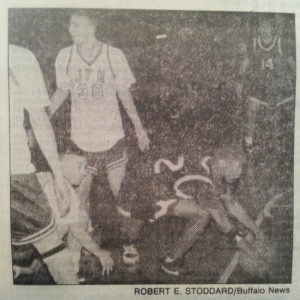 JR: Our goal was to win the State Championship. It was my personal goal and the team’s goal as well. When you have that goal, you get that ‘tunnel vision’. We used to say, ‘Get to Glen. Get to Glen. You’ve got to get to Glens Falls.’ That’s where the State Championship was held. For some time the Buffalo teams were having a hard time getting past the Rochester teams in the Far West Regional. We wanted to get past Rochester. For us, we had a lot of confidence because we played against the top notch competition in Buffalo. We were confident enough to get past Buffalo’s competition and we just had to beat the Rochester teams. It was step by step.
JR: Our goal was to win the State Championship. It was my personal goal and the team’s goal as well. When you have that goal, you get that ‘tunnel vision’. We used to say, ‘Get to Glen. Get to Glen. You’ve got to get to Glens Falls.’ That’s where the State Championship was held. For some time the Buffalo teams were having a hard time getting past the Rochester teams in the Far West Regional. We wanted to get past Rochester. For us, we had a lot of confidence because we played against the top notch competition in Buffalo. We were confident enough to get past Buffalo’s competition and we just had to beat the Rochester teams. It was step by step. JR: Everything. I think what we lacked is what they exploited. They had the structure we didn’t have. They were big and physical, and they just outworked us. I cried a lot after those two games. I shed a lot of tears. They were well deserved victories for them.
JR: Everything. I think what we lacked is what they exploited. They had the structure we didn’t have. They were big and physical, and they just outworked us. I cried a lot after those two games. I shed a lot of tears. They were well deserved victories for them. AD: So you guys beat
AD: So you guys beat  AD: Your team went on to suffer a heartbreaking
AD: Your team went on to suffer a heartbreaking 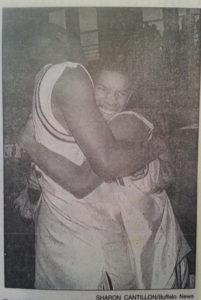 JR: Yes, that was the year that we won. It was fun, but it was also bitter sweet, because I remember when we won a lot of us were crying tears of joy, but we also understood that it was over – our run was over and that it was our last game together. Our team was very, very close.
JR: Yes, that was the year that we won. It was fun, but it was also bitter sweet, because I remember when we won a lot of us were crying tears of joy, but we also understood that it was over – our run was over and that it was our last game together. Our team was very, very close. JR: I had two personal goals going into high school; I wanted to get 1,000 assists and I wanted to win the
JR: I had two personal goals going into high school; I wanted to get 1,000 assists and I wanted to win the 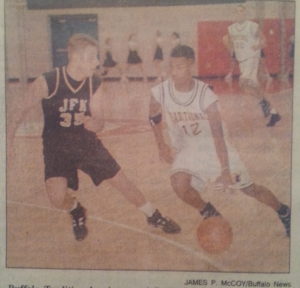 AD: In your junior season, the
AD: In your junior season, the 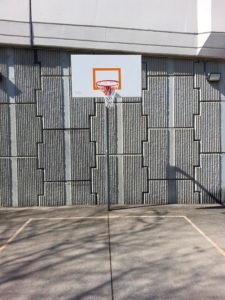 The first
The first 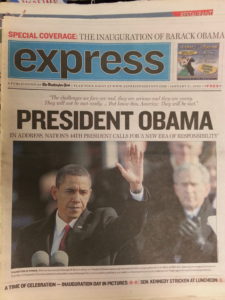 The following piece was originally published on the Examiner back in October of 2013 during my very first government shutdown as a federal employee. It was followed by another piece which I also recently republished titled
The following piece was originally published on the Examiner back in October of 2013 during my very first government shutdown as a federal employee. It was followed by another piece which I also recently republished titled 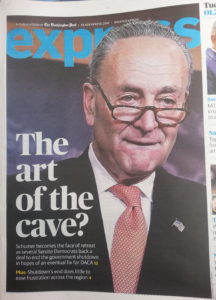 The following piece was originally published on the Examiner back in October of 2013 during my very first
The following piece was originally published on the Examiner back in October of 2013 during my very first  First of all, I hope the opening quote didn’t offend you. It was a part of an actual discussion with my father – one of many, and you’ll see its relevance later on. The first
First of all, I hope the opening quote didn’t offend you. It was a part of an actual discussion with my father – one of many, and you’ll see its relevance later on. The first 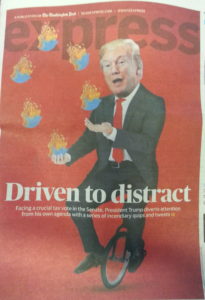 Actually, many discussions with my father, who is from Harlem, were also peppered with broad brush discussions of “white people”, “them”, or “they” in unflattering ways – usually about the oppression of black people, and white people having unfair competitive advantages in life. The opening quote of this post was from a discussion he and I had about spending habits and race. Are my parents, grandparents, aunts, and uncles racists? No, I don’t think they think black people are superior to other races, but they did experience segregation and
Actually, many discussions with my father, who is from Harlem, were also peppered with broad brush discussions of “white people”, “them”, or “they” in unflattering ways – usually about the oppression of black people, and white people having unfair competitive advantages in life. The opening quote of this post was from a discussion he and I had about spending habits and race. Are my parents, grandparents, aunts, and uncles racists? No, I don’t think they think black people are superior to other races, but they did experience segregation and 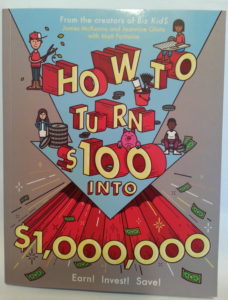 “The person who wrote this, are they white?” my godson asked me.
“The person who wrote this, are they white?” my godson asked me. I first thought about Asian-American wealth last year when someone on Twitter shared an infographic stating that Asian-American wealth has steadily grown, while their voter participation had stagnated. The point of the tweet was that while Black-America has been one of the more vocal groups during elections, and in civil rights/social justice arenas, we haven’t significantly closed the wealth gap with White-America (as a group). The implication of the tweet was that black people as a group were focusing on the wrong things.
I first thought about Asian-American wealth last year when someone on Twitter shared an infographic stating that Asian-American wealth has steadily grown, while their voter participation had stagnated. The point of the tweet was that while Black-America has been one of the more vocal groups during elections, and in civil rights/social justice arenas, we haven’t significantly closed the wealth gap with White-America (as a group). The implication of the tweet was that black people as a group were focusing on the wrong things. A subsequent figure titled “
A subsequent figure titled “ In the section titled, “
In the section titled, “ In closing,
In closing,